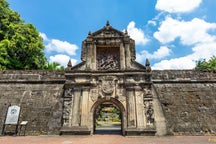
Calasiao Church in Pangasinan Province, also known as the Saints Peter and Paul Parish Church, is one of the most beautiful and well-preserved Spanish colonial churches in the Philippines.
Built in the 17th century, this National Cultural Treasure showcases intricate Baroque architecture, grand wooden doors, and a bell tower that still echoes the town's deep Catholic roots. It stands as a timeless symbol of Calasiao’s religious heritage and Spanish influence.
Nestled in the historic town of Calasiao, just a short drive from Dagupan City and Lingayen, the church is a must-visit for those exploring the cultural heart of Pangasinan Province. Its impressive brick façade, ornately carved altars, and centuries-old religious artifacts make it a popular stop for pilgrims and heritage travelers.
Whether you're tracing Spanish-era legacies or immersing yourself in local food culture, Calasiao Church adds depth to any Northern Luzon itinerary.









